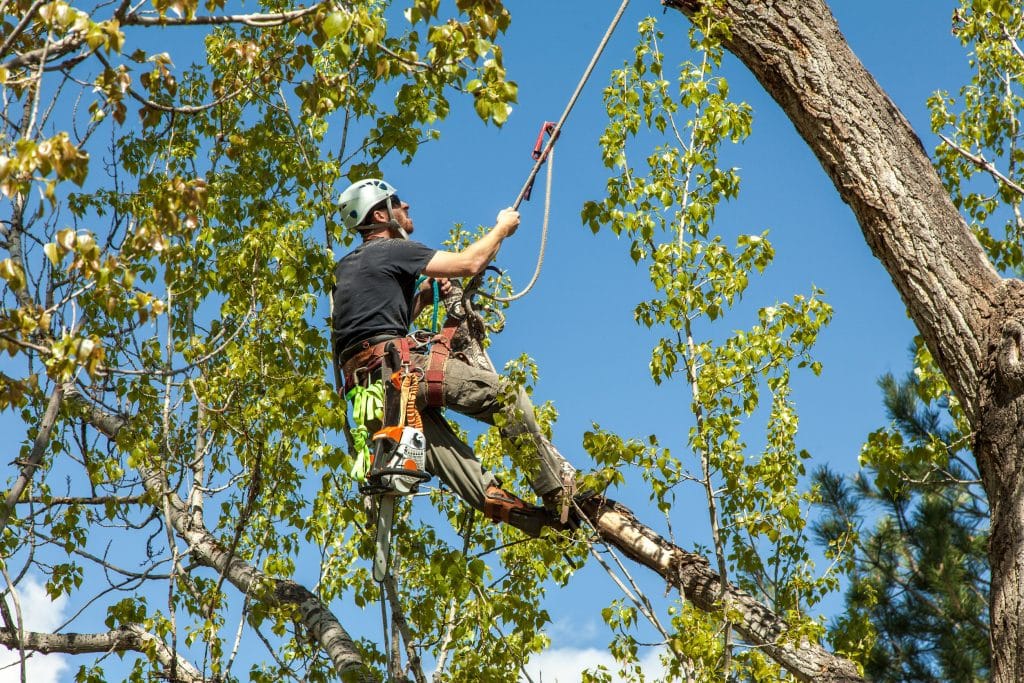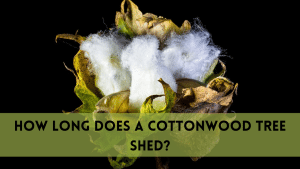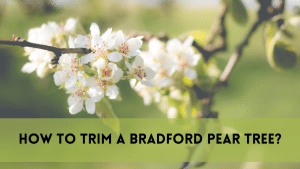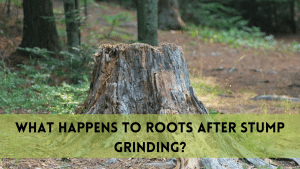For the trees’ health and to avoid potential harm, it can be difficult yet important to remove vines from tall trees. Here is our step-by-step instructions on how to safely and successfully remove vines:
Tools to Remove Vines
- Pruning shears or loppers
- Hand saw or tree pruner (for thicker vines)
- Gloves
- Safety goggles
- Ladder or pole pruner (for reaching high vines)
- Rope (optional)
Steps to Remove Vines from Tall Trees
Step 1: Safety First
Make sure you have the appropriate safety equipment, such as gloves and safety eyewear, before you start. Ensure that the ladder or pole pruner you employ is sturdy and in good condition.
Step 2: Identify the Type of Vine
Knowing what kind of vine you are working with is essential. While some vines, like English ivy, may be less detrimental to trees, others may be invasive and dangerous to them. Your removal approach will be more effective if you are aware of the species.
Step 3: Start at the Base
Begin by locating the base of the vine where it meets the ground. Use your pruning shears or loppers to cut the vine at this point. This will prevent the vine from accessing nutrients and water from the soil.
Step 4: Remove the Vine from the Tree
Carefully inspect the tree for any vines that have already climbed up its trunk. Gently pull the vines away from the tree, being cautious not to damage the tree’s bark. If the vines are tightly wound, use your pruning shears or a hand saw to cut them.
Step 5:Cut the vines in different places.
Cut the vines at numerous locations along the tree, especially where they branch out, to guarantee thorough removal. The vines can then be pulled down more easily as a result.
Step 6: Cut the upper vines
Use a ladder or a pole pruner to access the highest branches if the vines have gotten there. At the highest spot, you can safely access, and cut the vines.
Step 7: Carefully Take the Vine Down
Cut the vines and carefully remove them from the tree. Be gentle to prevent breaking branches or damaging the tree’s bark. In order to access higher vines, you might need to utilize a ladder or a rope.
Step 8:Dispose of the Vines
Dispose of the removed vines properly. Do not leave them near the tree, as they can reattach or cause other issues. You can compost the vines if they are not invasive, or check local regulations for disposal guidelines.
Step 9: Monitor and Maintain
Regularly inspect the tree for any new growth of vines and remove them promptly. Maintaining a vine-free tree is essential for its long-term health.
Vines are adaptable plants that may climb and cover a variety of surfaces. Here are a few popular varieties of vines:
Invasive vines:Invasive vines are plant species that grow swiftly and aggressively, displacing native vegetation and frequently harming the ecology.
Vines that Climb: These vines cling to vertical surfaces using aerial roots, twining stems, or tendrils. Examples include Virginia Creeper and Ivy.
Trailing vines: These creeping or trailing vines cover the ground or dangle from objects. This group includes groundcovers like Creeping Jenny.
Twining Vines: As they climb, twining vines wrap themselves around a support structure. Popular examples include Morning Glory and wisteria.
English ivy and pothos are examples of vines with aerial roots that form holdfasts or adhesive roots that adhere to walls and other surfaces.While some vines are evergreen, some are deciduous, losing their leaves in the winter.
The Advantages of Vine Removal Improved Tree Health
- Trees can regain their life by removing vines. This results in more robust branches, healthier leaves, and better development all around.
- Extended Lifetime
- Trees that are unencumbered by vines typically live longer. For forests to remain stable over the long run, this is essential.
- Reduced Disease Risk
- Trees may become more prone to pests and disease as a result of vines. They should be eliminated to prevent sickness.
- Better Aesthetics
- Trees without vines have a more appealing appearance, adding to the beauty of natural settings.
Precaution:
- Wear Safety Gear: Protect your hands and eyes from any potential irritation caused by the vines or debris by wearing gloves and safety goggles.
- Secure Equipment or a Ladder: If you’re using a ladder or pole pruner to reach high vines, make sure it’s level and stable. Consider safety precautions when using a ladder.
- Watch for Falling Debris: As you work, especially when pruning vines, be mindful of any falling leaves, branches, or other debris. Avoid anything that could be dangerous.
- Check Equipment: Make sure your cutting instruments, like pruning shears or saws, are sharp and in good operating order. Tools that are dull can be less useful and perhaps harmful.
- Determine the Vine’s Type: To understand potential, identify the type of vine you are dealing with.
FAQs
Can I Remove Vines During Any Season?
While you can remove vines throughout the year, it’s often easier during the dormant season (late fall or winter) when leaves have fallen, making it easier to spot and access the vines.
How Vines Affect Trees
Vines can strangle, smother, and outcompete trees for resources like sunlight and nutrients. Understanding their impact is crucial.
What chemicals kill vines?
Glyphosate: This multipurpose pesticide effectively kills the majority of vine species. It is frequently used by directly spraying it on the leaves. However, if not sprayed properly, it can destroy the vegetation in the area.
Triclopyr: A different herbicide that is less damaging to neighboring trees and shrubs and targets woody vines. It comes in a variety of forms, such as brush killer sprays.
Conclusion:
Finally, clearing vines from towering trees is an essential step in preserving their health and longevity. You can take proactive steps to protect your arboreal friends by being aware of the different varieties of vines, their negative impacts on trees, and the several eradication techniques that are available.
Regular upkeep and monitoring are essential to success, regardless of whether you opt for manual eradication or the use of herbicides. Keep in mind that strong trees are essential to our ecosystem and enhance the attractiveness of our landscapes. Roll up your sleeves, remove those vines, and then watch as your big trees flourish and continue to contribute their majesty to the landscape for years to come.





